SenseHub® dairy SOMATIC CELL COUNT MONITORING
Monitor every cow’s somatic cell count, every day, with SenseHub® Dairy SCC sensors.
Knowing each cow’s somatic cell count throughout the season is key. Get the sense to make udder health decisions and protect your milk quality without disrupting your milking routine. Suitable for herringbone and rotary cow sheds.
protect your herd, bulk milk and income potential
Knowing her somatic cell count is key
Installed in-line, SenseHub Dairy SCC sensors give you fast, frequent somatic cell counts, per cow, within 2 minutes of cupping, throughout her entire lactation.
Get automatic somatic cell count results for individual cows so you can promptly identify cows with high counts, and then quickly respond in order to protect your herd, bulk milk quality and income. Regular monitoring can help you know when to take action in order to achieve <150,000 BMSCC to be rewarded for ‘excellent’ quality milk bonus payments from your milk processor.
Know who and when to dry-off, based on regular monitoring, which is also best practice and enables more selective dry cow therapy.
With the SCC Dry-off report, you will have an automated list of cows that are within 30 days of their dry-off date that had an average SCC of <150,000 in the last 12 weeks. These animals are potentially eligible for selective dry cow therapy and this practice should be discussed with your veterinarian.
Monitor. Understand. Act.
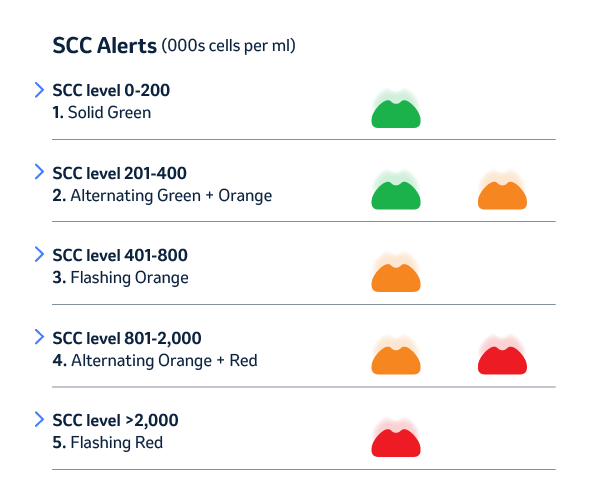
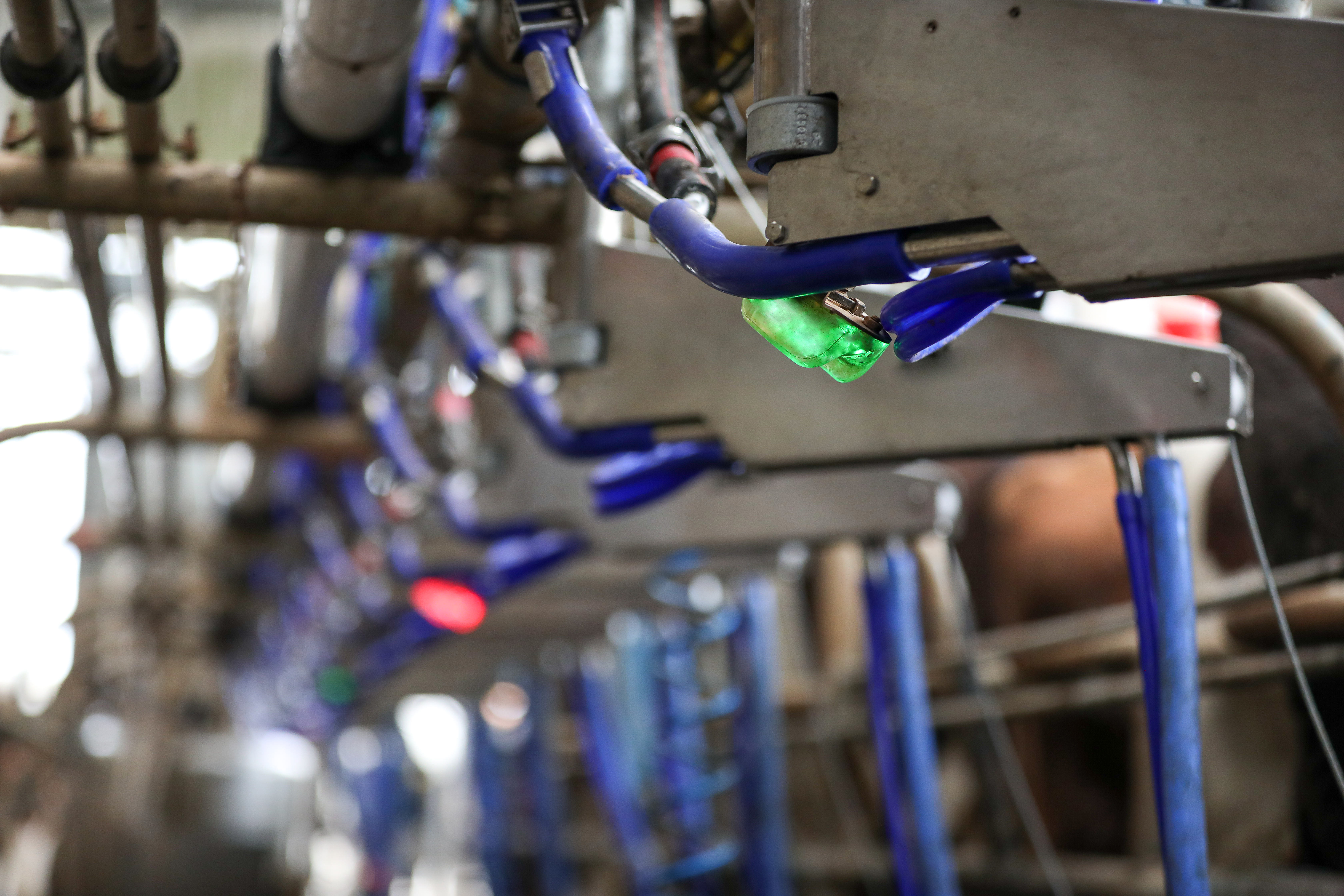
SenseHub® dairy SCC sensor
How it works
The somatic cell count sensor performs an automated gel reaction Rapid Mastitis Test (RMT) using SCCGel reagent.*
Optical warning lights (OWLs) installed at the milking point will turn green, orange or red, depending on the SCC result for that cow, while she is still in the bail. Red light alerts you to a high SCC result, allowing you to monitor and act fast, if needed.
If your sensors are standalone (not connected to SenseHub Dairy), you can manually record or mark the cow if she gets a red light.
If your sensors are connected to SenseHub Dairy, the SCC result is automatically matched to each cow via Entrance ID then stored and displayed in SenseHub Dairy software, along with data from your cow collars, giving you access to additional reporting and alerts, all in one ecosystem.
*Note: Annual costs include purchase of SCCGel and servicing the sensors
SenseHub® dairy SCC sensor
Features
- Installed in-line
- Promptly identifies cows with high SCC
- Optical warning light (OWL) visual alert for Herringbone sheds
- Connected systems store data in SenseHub Dairy software for viewing and reporting, including the new DryCow Report
- Get SCC results every day, for every cow, instead of infrequent herd testing
- Measures somatic cells not conductivity, so a more familiar and user-friendly measurement
- Suits herringbone and rotary sheds
- Made in New Zealand
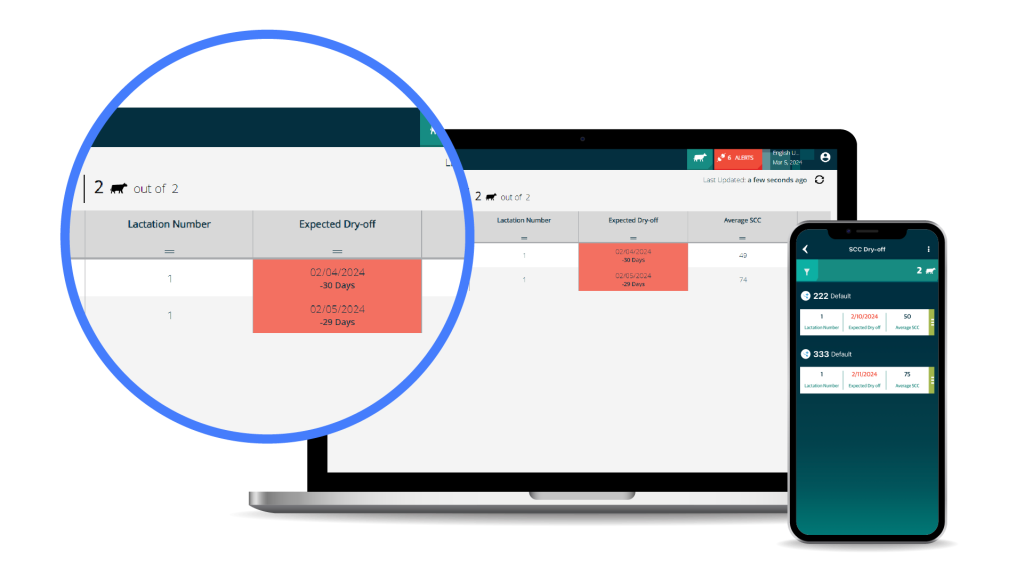
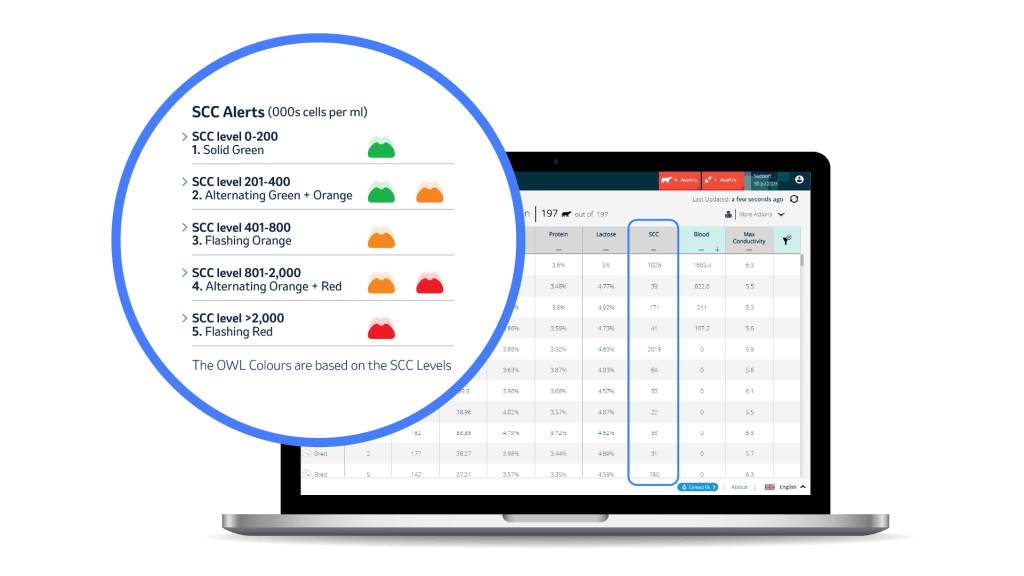
SenseHub® dairy SCC sensor
Benefits
- Doesn’t disrupt your milking routine
- Enables quick intervention, if required, while the cow is still in-bail
- Early intervention can increase milk production and milk quality
- Protect your bulk tank score, helping you to get excellent milk quality benefits
- More frequent data for better trend analysis
- Reduces the need to strip the herd, faster milking, less skilled labour required
- Improve breeding, dry-off and culling decision making
- More selective Dry Cow Therapy decisions
- Retrofit and install into any current and new sheds
SCC sensor
Compatibility
- Rotary and herringbone sheds
- SenseHub Dairy Premium application plan
- Integrates with SenseHub Dairy collars and drafting
- Schedule auto drafts
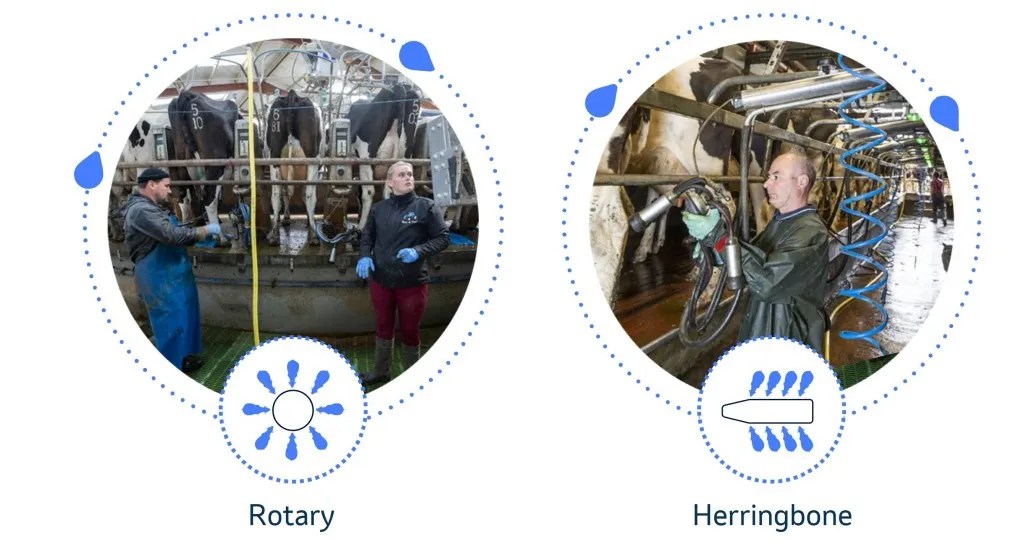
SenseHub® dairy SOMATIC CELL COUNT MONITORING
What is Mastitis?
Mastitis is an inflammation of the cow’s mammary gland, which is usually caused by bacteria entering the teat canal and moving into the udder tissue. It can occur at any stage of lactation, including the dry period, but is most likely in the first month after calving and in late lactation. Mastitis is one of the most significant challenges in dairy farming, affecting milk quality, production, and cow well-being.
Subclinical versus clinical mastitis
Mastitis can be characterised as subclinical or clinical.
- Subclinical mastitis is defined as the presence of inflammation with a normal-appearing mammary gland and visibly normal milk, which usually has an elevated milk somatic cell count. Most cases of mastitis are subclinical.
- Clinical mastitis is defined as inflammation of a mammary gland that can be easily detected through a visual examination of the milk and/or udder. Common symptoms indicating clinical mastitis are milk abnormalities (clots, blood, watery or discoloured), or swelling, hardness or redness of the udder. Clinical mastitis normally requires intervention.
Mastitis & SCC: understanding the link
While mastitis has multiple causes, Somatic Cell Count (SCC) is a key indicator of udder health. Higher SCC levels often signal an immune response, helping farmers identify cows that may require attention.
Why SCC monitoring matters for milk quality
Somatic cells are naturally present in milk, but high SCC levels can indicate udder inflammation. Elevated SCC can lead to:
- Reduced milk yield due to immune system response
- Lower milk quality affecting its value and processing properties
- Increased risk of antibiotic use if infections progress
Regular SCC monitoring supports better milk quality management by helping farmers track trends and take action when needed.
Not All SCC Levels Are the Same
Each cow’s SCC can fluctuate for many reasons beyond infection, including:
- Lactation stage – SCC naturally increases toward the end of lactation
- Parity – Older cows may have higher baseline SCC
- Stress & environment – Weather and other stressors can impact SCC
That’s why monitoring SCC at an individual level is crucial – it helps distinguish between normal variations and potential health concerns.
Using individual SCC data to support selective dry cow therapy decisions
Selective Dry Cow Therapy (SDCT) requires a clear understanding of each cow’s SCC status at dry-off. By having automatic, individual SCC readings at every milking, farmers can make more informed decisions on which cows align with their SDCT strategy. The SenseHub In-Line SCC Sensor provides real-time SCC data per cow, offering valuable insights to help farmers manage milk quality while applying SDCT practices effectively.
Bulk tank SCC
Most dairy contracts outline the somatic cell count thresholds that will earn farmers bonuses or result in penalties. A typical bulk tank SCC penalty threshold is 400,000 cells/mL. Monitoring each cow’s SCC enables bulk tank SCC to be managed more effectively, decreasing the chance of financial penalties and increasing the chance of incentive payments.
Taking control of SCC in your herd
Proactive SCC monitoring allows farmers to:
- Detect rising SCC early, before it impacts bulk tank levels
- Separate or manage high-SCC cows to prevent contamination
- Make informed culling, breeding, and treatment decisions
- Optimise dry-off strategies based on individual SCC history
sign up or have a chat – leave your details below
Our local Sales Specialist will get in touch soon
want to know more?
Find a Sales Specialist
If you would like more information on SenseHub Dairy monitoring and automation solutions, give your local specialist a call today!

SenseHub® Dairy cow collars offer more accurate heat detection and lower empty rate.
Continue reading >Every cow receives individual attention if she needs it – SenseHub® Dairy cow collars
Continue reading >NZ-SHB-241100005






 Argentina
Argentina Australia
Australia Belgium (Dutch)
Belgium (Dutch) Brazil
Brazil Chile
Chile Colombia
Colombia Czech Republic
Czech Republic Finland
Finland France
France Germany
Germany Ireland
Ireland Italy
Italy Japan
Japan Mexico
Mexico New Zealand
New Zealand Norway
Norway Panama
Panama Poland
Poland Portugal
Portugal Spain
Spain Sweden
Sweden United Kingdom
United Kingdom Vietnam
Vietnam Global
Global